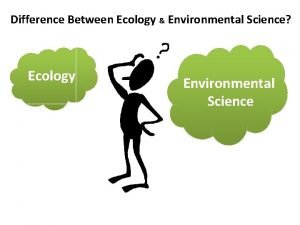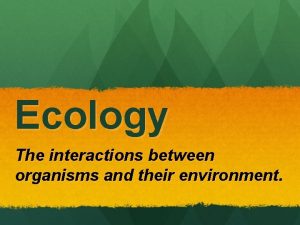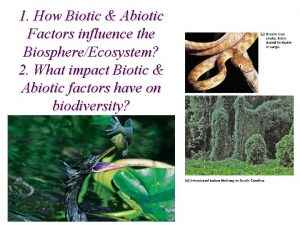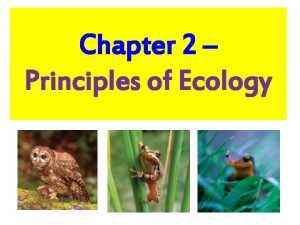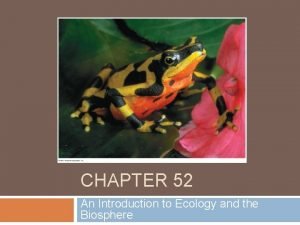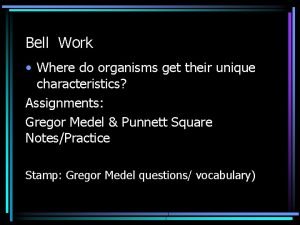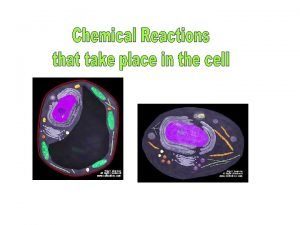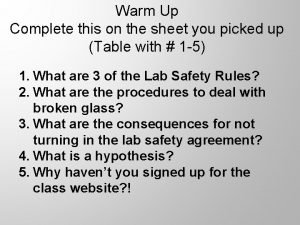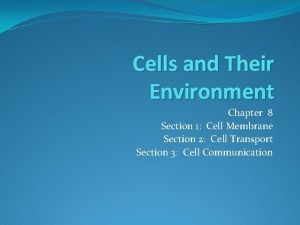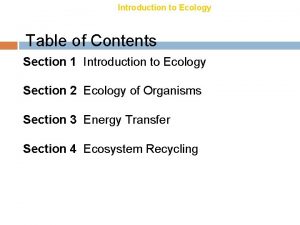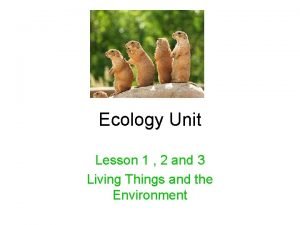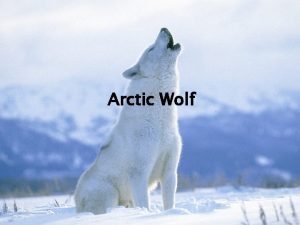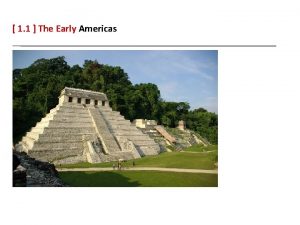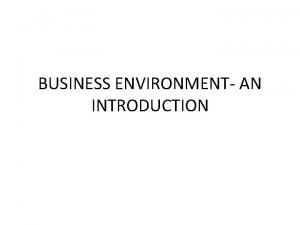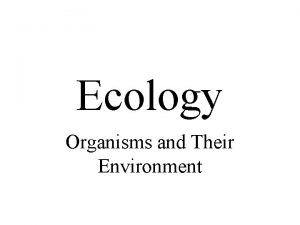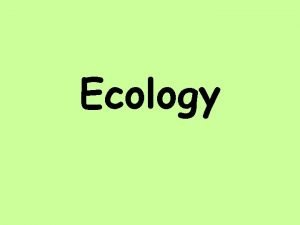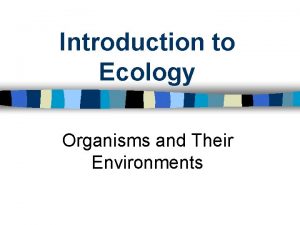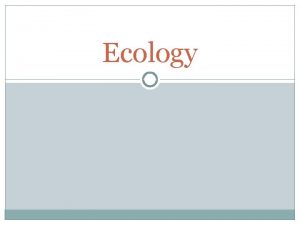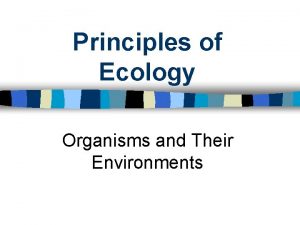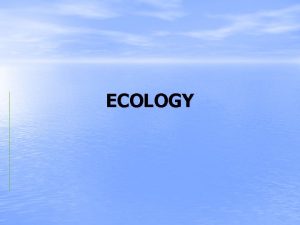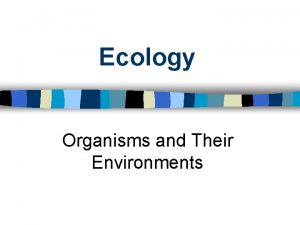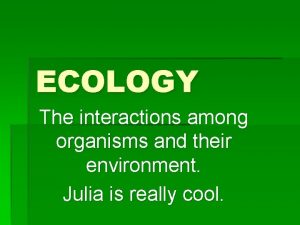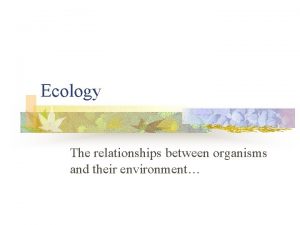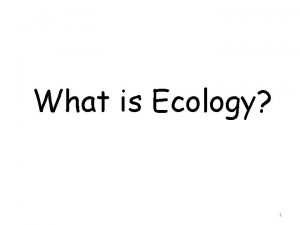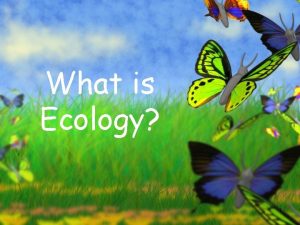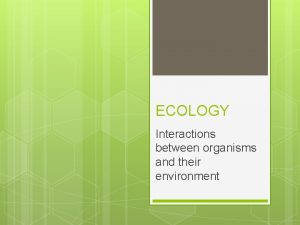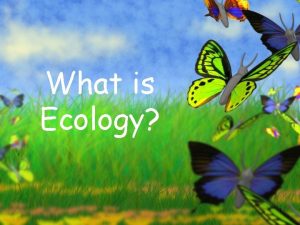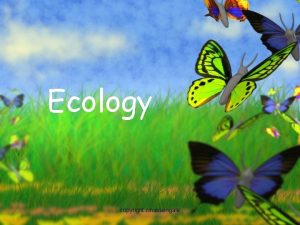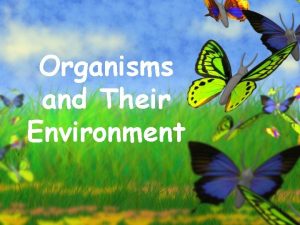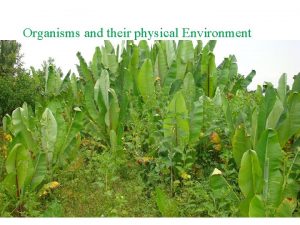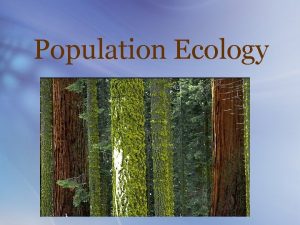Introduction to Ecology Organisms and their environment Ch





























- Slides: 29

Introduction to Ecology

Organisms and their environment Ch 2. 1

What is ecology? The study of the interactions of organisms with one another and their environments

Parts of the Environment Abiotic Factors Non-living parts of environment Air Current Water Temperature Light Soil These things have a great effect on organisms

Parts of the environment Biotic Factors All living parts of an environment Animals Plants Microorganisms Fungi Bacteria These organisms interact with each other mostly in competition or as food

Abiotic or Biotic? 6 Biotic

Abiotic or Biotic? 7 Abiotic

Abiotic or Biotic? 8 Abiotic

Abiotic or Biotic? 9 Biotic

Levels of Organization 10

Levels of Organization Ecologists have organized the interactions an organism takes part in into different levels according to complexity. 11

What are the Simplest Levels? Atom Molecule Organelle Cell Tissue Organ System 12

Ecological levels of Organization BBECPO

Largest and most inclusive Level of Organization Biosphere: The portion of Earth that supports life. 14

Biome- Major ecosystem type Determined by precipitation and temperature.

Ecosystem All of the living and nonliving things within a given area. Biotic-living Abiotic-nonliving Basically a community plus all of the nonliving stuff too! 16

Community All the populations of different species that live in the same place at the same time. (living things only) 17

Population A group of organisms, all of the same species, which interbreed and live in the same place at the same time. 18

Organism An individual living that is made of cells, uses energy, reproduces, responds, grows, and develops 19

What level of organization? Organism 20

What level of Organization? 21 Community

What level of Organization? 22 Population

Organisms in Ecosystems Habitat (location) Place were organism lives out its life Ex: a stream, a field, your lawn Humans have high influences on habitats

Niche (job) Not all habitats are used in the same way All strategies and adaptations a species uses in its environment Need for food Where and how it survives Reproduction interactions

Sometimes organisms are classified by their job Producers-Autotrophs Use photosynthesis to make food from sunlight, carbon dioxide and water Plants and algae

Consumers-Heterotrophs Eat plants or animals to meet their energy requirements Name some consumers

Decomposers. Saprotroph These organisms breakdown dead organisms Fungus and bacteria are examples of saprophytes

Survival Relationships Symbiosis A close relationship between different organisms living together Mutualism Both species benefit Hummingbird and flowering plant

Other relationships Commensalism One species benefits but other is not harmed or bothered Parasitism Beneficial to one species but harmful to the other
 Chapter 2 principles of ecology answer key
Chapter 2 principles of ecology answer key Section 1 organisms and their relationships
Section 1 organisms and their relationships Unicellular/multicellular
Unicellular/multicellular Levels of organization in the biosphere
Levels of organization in the biosphere Ecology and environment difference
Ecology and environment difference Chapter 1 science and the environment
Chapter 1 science and the environment Competitive interaction
Competitive interaction Organisms and the environment
Organisms and the environment Environment vs ecology
Environment vs ecology Chapter 2 section 1 organisms and their relationships
Chapter 2 section 1 organisms and their relationships Chapter 2 section 1 organisms and their relationships
Chapter 2 section 1 organisms and their relationships Principles of ecology chapter 2
Principles of ecology chapter 2 Living organisms and their surroundings
Living organisms and their surroundings Chapter 2 section 1 organisms and their relationships
Chapter 2 section 1 organisms and their relationships Marine ecology
Marine ecology Chaparral climograph
Chaparral climograph Where do organisms get their traits?
Where do organisms get their traits? Where do all organisms get their energy
Where do all organisms get their energy The process of grouping things based on similarities
The process of grouping things based on similarities Organisms that make their own food
Organisms that make their own food Cells and their environment worksheet answers
Cells and their environment worksheet answers Section 18-1 introduction to ecology worksheet answers
Section 18-1 introduction to ecology worksheet answers Lesson 1: introduction to ecology answer key
Lesson 1: introduction to ecology answer key Environment of business finance
Environment of business finance Arctic wolf physical features
Arctic wolf physical features Anasazi social structure
Anasazi social structure Which represents an aztec adaptation to their environment?
Which represents an aztec adaptation to their environment? Romeo prologue
Romeo prologue Barker's ecological theory of environmental psychology
Barker's ecological theory of environmental psychology Business environment introduction
Business environment introduction




